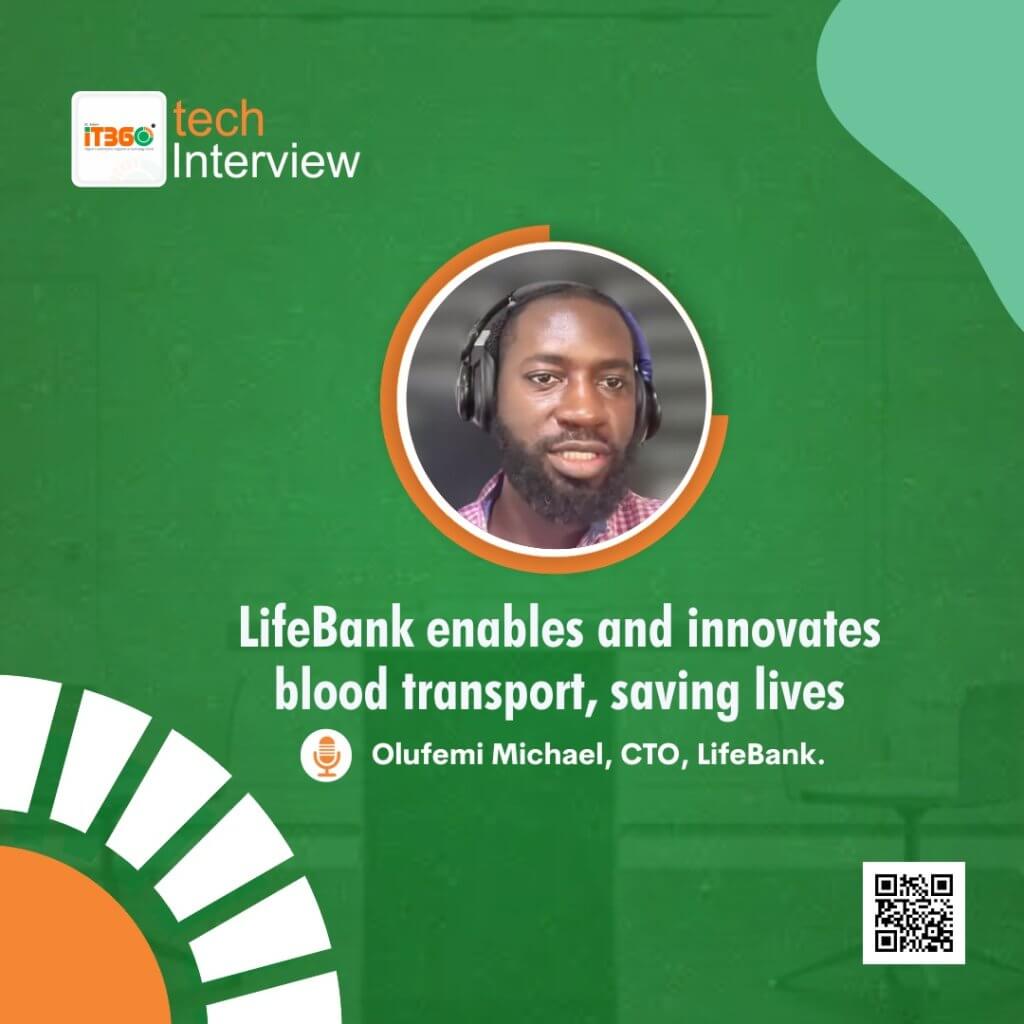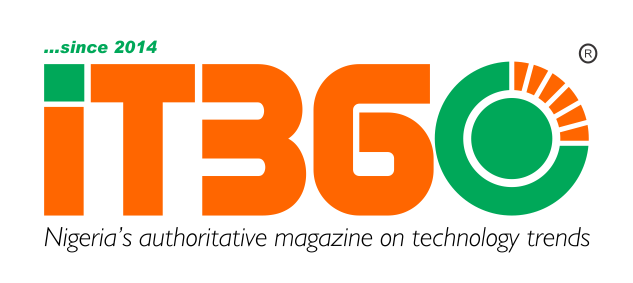On Wednesday, March 27th, 2024, iT360 Magazine hosted the Chief Technology Officer and Co-Founder of LifeBank, a health business enterprise that was recently named the 2024 Social Innovator of the Year by the SCHWAB FOUNDATION FOR SOCIAL ENTREPRENEURSHIP, at the World Economic Forum in an interview session set to recognise one of the few tech start-ups making their mark in Nigeria. Diving into the interview, iT360 Magazine began by asking the CTO and Co-Founder some questions.
Could you introduce yourself and your role in the company?
My name is Ayo Olufemi Michael. And I am the CTO and co-founder for LifeBank.
Could you please tell us what LifeBank is all about? And how did LifeBank get started?
LifeBank, established in 2016 by Temie Giwa-Tubosun and me, initially centred its efforts on blood donation and supporting hospitals with the necessary resources for effective patient care. Beyond merely collecting and transporting blood, the company is dedicated to equipping healthcare service providers with essential supplies, enabling them to concentrate on enhancing patient outcomes. With a primary focus on delivering affordable healthcare solutions to underserved communities, LifeBank strives to alleviate healthcare disparities and improve accessibility.
Inspired by a poignant incident involving the tragic death of a young girl due to postpartum haemorrhage, Temie Giwa-Tubosun conceived the idea for LifeBank. Years later, after nurturing this vision while abroad, she returned to Nigeria and, with determined support, pitched the concept successfully. This led to the founding of LifeBank in 2016, marking the beginning of a transformative journey. Over the years, the company has evolved significantly, extending its impact by not only facilitating blood donations but also broadening its scope to encompass critical medical supplies like oxygen consumables and equipment, thereby making substantial contributions to the healthcare sector
Do you have distribution channels in other States in the South-West region aside Lagos State?
LifeBank maintains a robust operational presence across all states in Nigeria, with affiliations in teaching hospitals nationwide and physical offices in six strategic political jurisdictions. Their distribution model ensures comprehensive coverage throughout the country, with organisational frameworks tailored to specific contexts. Beyond Nigeria, LifeBank operates in Kenya, Nairobi, and Ethiopia, facilitating life-saving treatments in hospitals and contributing to approximately 60 thousand lives saved to date. Their impact extends beyond blood products to include oxygen consumables, equipment, and various auxiliary healthcare initiatives, marking an evolution in their services.
Is LifeBank a B2C or B2B and what are the challenges faced?
Our operational focus is primarily on the B2B model, distinct from B2C approaches, with the goal of easing patients’ burdens through direct service to hospitals and medical professionals. We prioritise efficient delivery of essential items for patient care, ensuring hospitals and doctors promptly receive the necessary resources to streamline recovery processes. Despite our technological foundation, our identity as a tech company may not be immediately apparent, as our main focus is on optimising patient care rather than public-facing interactions. An illustrative scenario exemplifies our approach: in situations requiring specific blood types for cross-matching in a laboratory, it’s the responsibility of medical personnel—not patients—to manage such complexities. Our model aims to empower healthcare providers to source and implement necessary treatments, allowing patients to focus solely on their recuperation journey.
If your technical team facilitates the transportation of blood with your solutions, where do you source the blood from?
At LifeBank, we don’t produce blood ourselves. Instead, we operate through the innovative NERVE platform, connecting with multiple blood banks to efficiently source blood and related products. Utilising a sophisticated algorithm, NERVE swiftly matches facility requests with available products, ensuring compliance with regulations and timely delivery within 40 minutes, contingent upon product availability. Beyond blood products, LifeBank offers delivery of critical medical supplies and facilitates easy platform installation after a simple verification process. Moreover, the company specialises in integrating healthcare systems, deploying physical and block chain software seamlessly, and employing AI to pre-emptively prevent operational disruptions, ensuring tailored solutions for hospitals and healthcare facilities

Could you please outline some of the difficulties you encountered while managing the blood bank and its associated facilities?
In our engagement with the blood banks, we encountered notable challenges related to compliance, documentation, and ensuring the timely and efficient distribution of necessary blood supplies across various facilities. This involved adhering to specific protocols regarding the dispatch of blood, coordinating delivery schedules, and ensuring proper labelling to avoid potential sanctions or penalties.
Additionally, integrating technological advancements within healthcare environments posed significant hurdles. The resistance to adopting new systems stemmed from entrenched acceptance procedures, complicating the implementation of innovative solutions such as AI integration. The persistence of outdated technologies like pagers in healthcare settings highlighted the need for a smoother integration of modern technology into existing infrastructures. Consequently, overcoming barriers to technological adoption within the healthcare sector remains a prominent challenge for us.
How do you manage the human personnel of the service provider?
Managing the human personnel within our service provider framework is crucial for ensuring smooth operations. Overcoming challenges in this area has been central to our approach, drawing on our accumulated experience spanning several years. We prioritise the seamless functioning of our system by implementing rigorous screening processes for both vendors and hospitals, aligning them with our expectations and requirements. Automation plays a key role in this, with system requirements integrated to facilitate the delivery of high-quality healthcare products and equipment. Any failure to adhere to these standards results in automatic rejection from the system, ensuring compliance and reliability. Additionally, we enforce strict guidelines to address issues such as vendors listing products they no longer possess, imposing penalties until rectification occurs. By adhering to these established protocols, we effectively mitigate potential disruptions and maintain operational integrity.
How do you stay compliant with the government?
Ensuring compliance with government regulations is paramount in the healthcare sector, as adherence to standards is vital for sustaining operations. This commitment to compliance has been instrumental in our continued business success, especially given the unique nature of our services. For instance, in Lagos State, adherence to strict regulations within the blood system is imperative. Each dispatched blood unit must be registered and affixed with a Lagos State sticker to validate its legitimacy, thereby ensuring accountability and safety throughout the distribution process. Additionally, comprehensive record-keeping is mandatory, with monthly reports detailing the movement of all blood products within the state’s healthcare system.
While compliance requirements vary among states and countries, we have effectively adapted to these diverse regulatory landscapes by implementing standardised protocols and leveraging lessons learned from past challenges. This proactive approach enables us to uphold consistency and effectiveness in meeting compliance standards across different regions. Through experience, we have developed the capability to identify and address instances of false information submission, safeguarding the integrity of our operations and prioritising the well-being of individuals relying on our services
How does the USSD platform operate?
In addition to internet-based access, we provide the USSD platform for individuals without internet connectivity, thereby ensuring accessibility across both high-tech and low-tech spectrums for product development. Users can access the platform via either high-tech or low-tech means.
Reflecting on the inception of our employment of the USSD solution, it initially served as a substitute for a web platform before transitioning to a mobile platform for a client in Igbologun, Snake Island, Lagos. The client faced challenges accessing customer service, necessitating expensive and unreliable boat trips to the island to make calls. Recognising the inadequacies of the existing network for clear communication, we opted to develop a solution integrating both advanced and rudimentary technological elements. This solution was designed to operate on a 24/7 basis, providing round-the-clock customer support. Dialling a short code on a phone takes less than 20 seconds, significantly reducing the time spent compared to lengthy explanations to customer service representatives. Moreover, customers can reach us during peak periods when there may be up to 100 concurrent calls, eliminating the need for extended waiting times.
We prioritise simplicity, speed, and user-friendliness in our solution to ensure efficient and effective fulfilment of customer needs. Its design emphasises ease of use and efficiency, guaranteeing a seamless and streamlined experience for customers.
What improvements does LifeBank anticipate in the upcoming years?
LifeBank is poised for significant expansion across Africa, focusing on bolstering healthcare systems and integrating AI solutions. Their partnership with Benshi AI, now operating as Casual Foundry, is pivotal to their growth strategy. Currently raising capital for a Series A round, they aim to drive substantial advancements within their ecosystem. Leveraging small-scale machine learning and AI, they’re actively training models and plan to unveil AI products in the near future. Alongside technological progress, LifeBank foresees a wave of innovation marked by expansion initiatives and novel developments in the years ahead
What is the affordability of your services? Do you employ a fee structure upon on boarding, or is it based on the volume of deliveries?
Our services are exceptionally affordable. LifeBank is committed to delivering accessible healthcare solutions to all, including hospitals in Igbologun. Through our subsidiary, Boots, under the CRS division of LifeBank, we offer subsidised products to hospitals and establishments operating below sustainable wage levels. Supported by funding from the Art Foundation and individual contributors, LifeBank extends its services across various healthcare facilities, catering to diverse economic brackets.
What measures are in place to ensure the security of your application? Have there been any instances of breaches in the past?
At present, our application remains uncompromised, fortified by a robust system architecture that segregates each application into distinct silos. Upholding the sanctity of patient data, we rigorously adhere to Nigerian privacy statutes. Our commitment to security extends to the meticulous design of our login system, meeting or surpassing prescribed security standards. Recognising the paramount importance of privacy, we steadfastly uphold Nigerian privacy regulations to safeguard the integrity and confidentiality of user information
What is the process for prospective service providers to sign up for the Nerve application?
The on-boarding process for service providers is rigorous, involving in-person discussions, inspections, and product verification to ensure quality. A designated representative engages potential partners in detailed discussions and may offer referrals, ensuring alignment with appropriate categories. This meticulous approach maintains high standards on the platform. For vendors, the process begins with in-person visits and dialogue, followed by signing a Service Level Agreement (SLA) to ensure compliance. Our system setup enables seamless management of multiple users without necessitating additional devices or setups. With just a phone, facilities or hospitals can easily access and utilise the system, thereby simplifying the integration process for vendors and enabling them to capitalise on the enhanced efficiency of the workflow.


